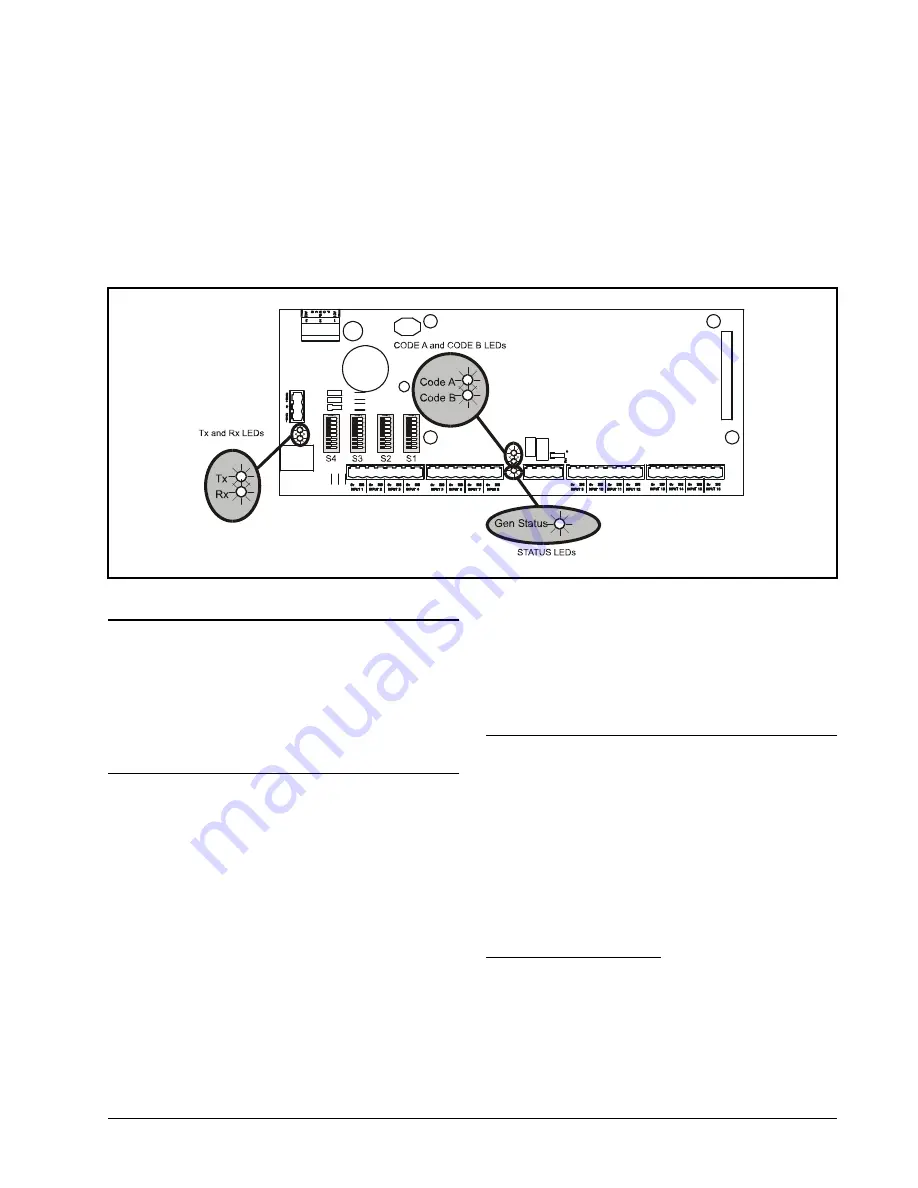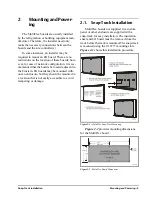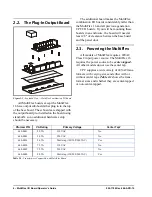
Status LED
Board Status LEDs • 19
5
Board Status LEDs
When a MultiFlex board is powered up, you
will be able to determine the operating status of
the board by observing its status LEDs.
shows the location of the MultiFlex’s status
LEDs.
5.1. Status LED
The Status LED simply blinks GREEN once
per second to show that the board is powered
and operational. If this light is dark, the board
has likely lost power.
5.2. Tx and Rx LEDs
The Tx and Rx LEDs indicate when the Mul-
tiFlex is sending or receiving messages on the
RS485 network.
The Tx LED blinks once every time the Mul-
tiFlex sends a response to the Einstein or
REFLECS. The Rx LED blinks once when the
MultiFlex receives a message.
If the MultiFlex is connected to the network
and set up to communicate with the controller,
you should see these lights blinking regularly. If
they do not, there may be a problem with the net-
work.
5.3. Code A and Code B LEDs
All MultiFlex I/O boards except the Multi-
Flex 16 have two LEDs labeled Code A and
Code B. These LEDs indicate failure conditions.
When these LEDs are OFF, there are no failures
active. When one or both of these LEDs are
blinking, there are failure conditions. The rate of
blinking indicates the type of failure:
Code A Failure Conditions
•
Blinking fast (4 times/second) -
There is a problem
with the flash memory or hardware clock on this
board. This generally means the board is bad and
must be replaced.
•
Blinking slow (1 time/second) -
The board is not re-
ceiving any messages addressed to it. This means ei-
Figure 5-1 - MultiFlex Status LED Locations
Summary of Contents for 810-3013
Page 1: ...026 1704 Rev 6 06 APR 10 MultiFlex I O Board Installation and Operation Manual ...
Page 2: ......
Page 4: ......












































